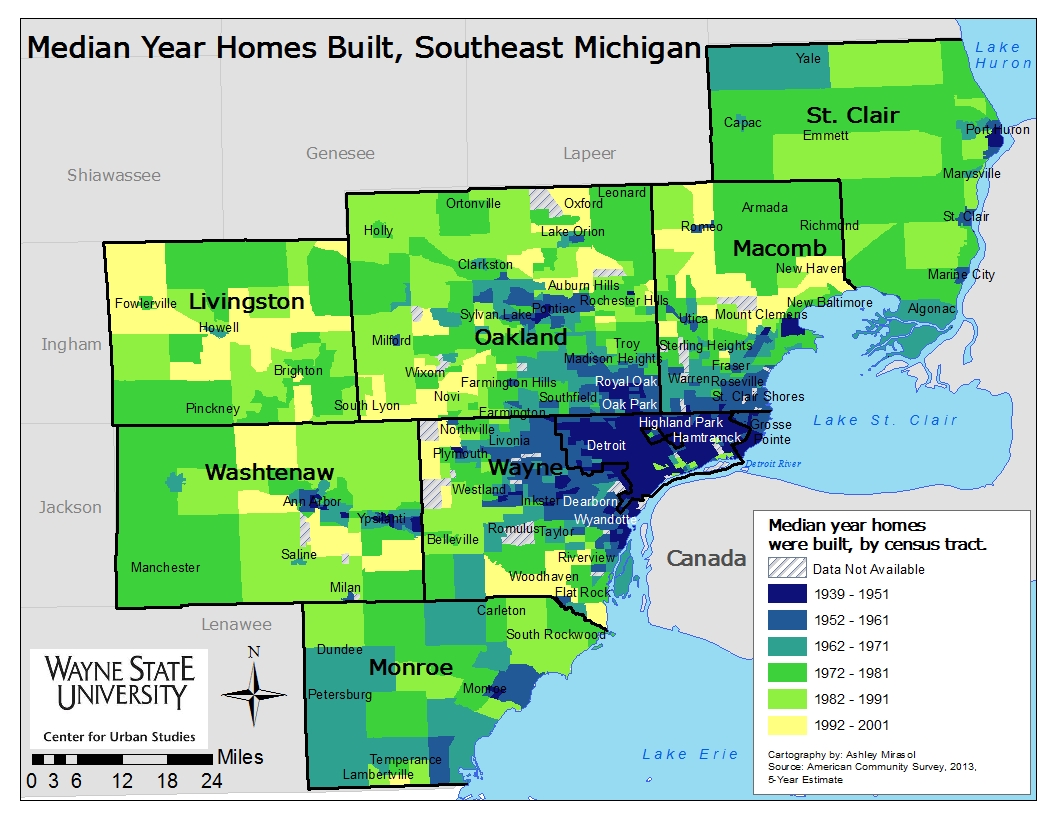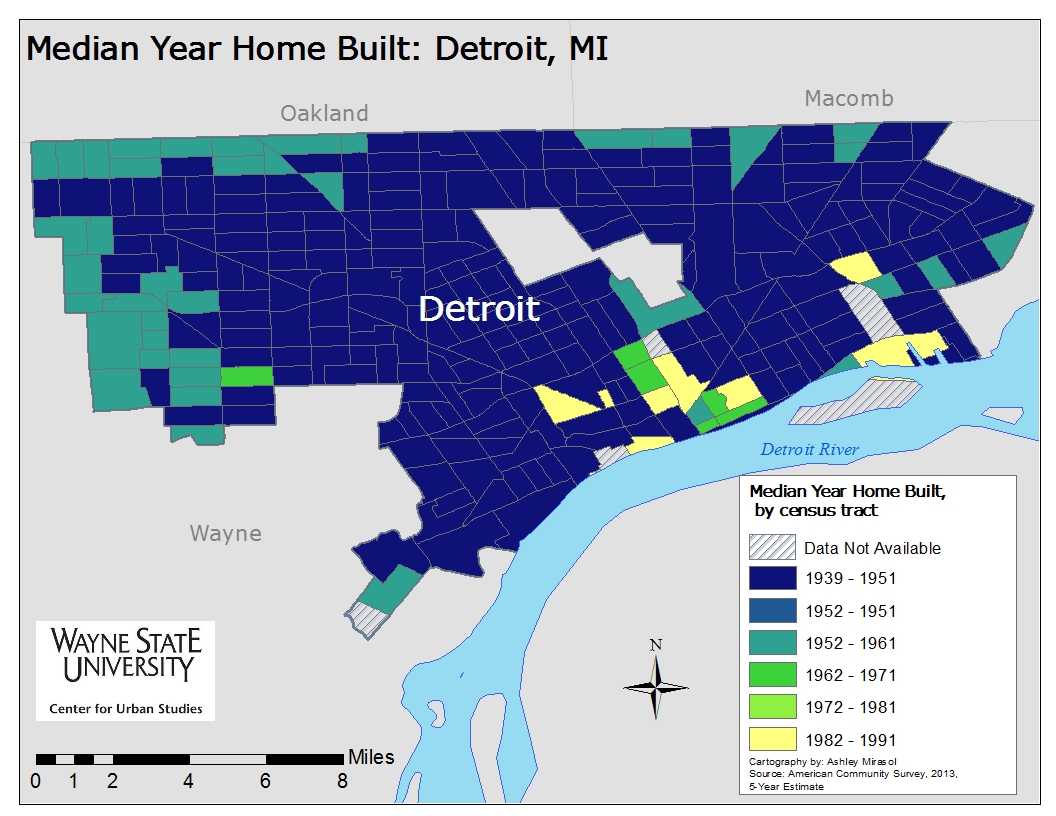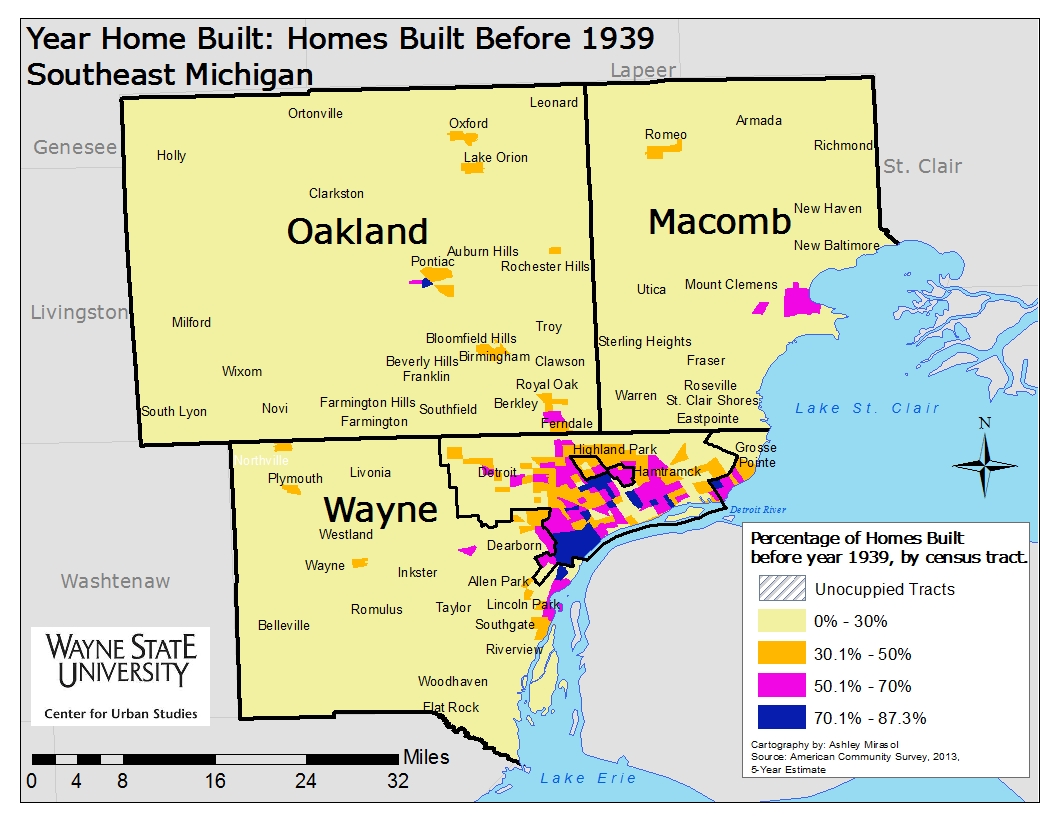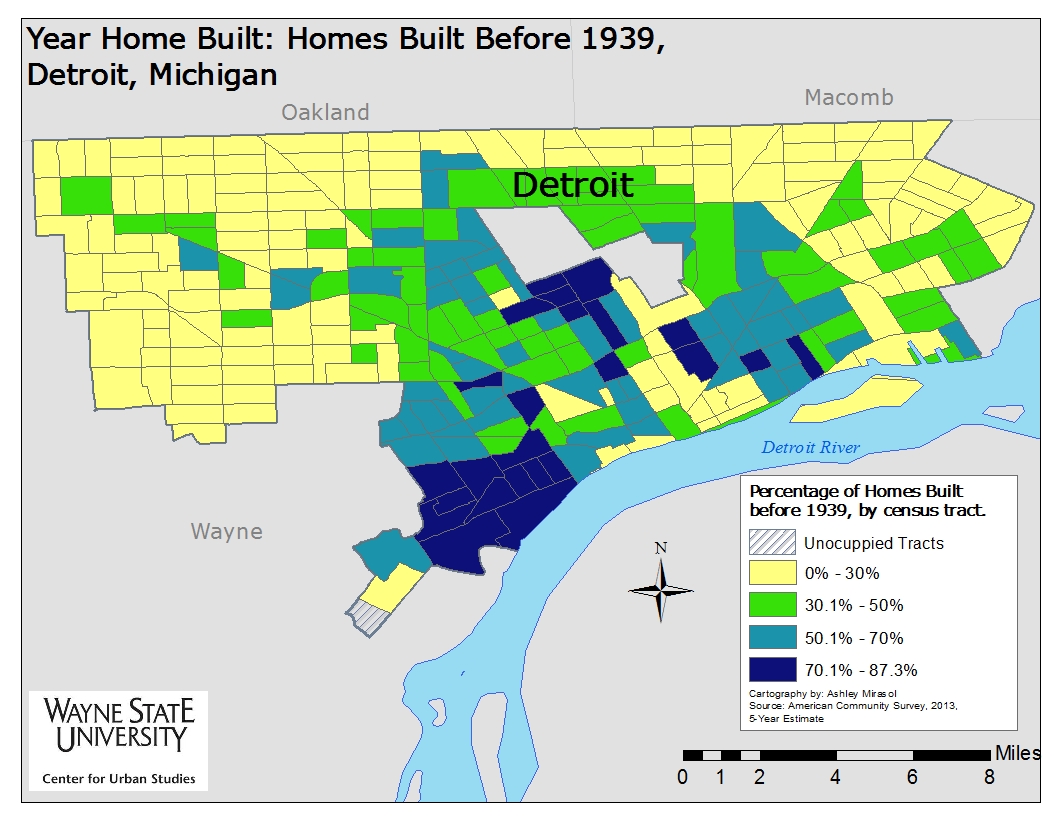Vacancy data shows that the region’s oldest homes face higher rates of abandonment. And Detroit has the biggest challenge in this regard. However, data in this post shows that many suburban and rural communities also have an aging housing infrastructure. These homes will require increasing amounts of investment to remain safe and habitable. The maps below show that a number of communities had an average housing stock of greater than 50 years old. For instance, the city of Detroit’s average year that a house was built was 1939. In the maps below we see that majority of the region’s housing stock was built between 1972 and 1991, but that Wayne County and the Woodward Corridor has older housing on average than other areas.
Throughout the seven-county region, with the exception of the city of Detroit, we see that the median age of the housing stock is between 24 and 43 years (meaning they were built between 1972 and 1991). This fact corresponds with the beginning of population loss in Detroit (1960s), when residents began to move in large numbers to the suburbs. Other regional communities, such as Royal Oak, Pontiac and Livonia, neared their population peaks in the 1970s (view our previous post on the growth and decline of the region’s population here).
In addition, the maps shows us that Detroit’s median housing age is between 64 and 76 (meaning they were built between 1939 and 1951). It was during 1950 when Detroit’s population peaked at 1.8 million, so it is logical to think that a large portion of its housing stock was built leading up to that population peak.
Other areas where the median age of housing ranges between 64 and 76 years of age include Port Huron, Pontiac, Hamtramck and Highland Park. Hamtramck and Highland Park experienced population growth through the 1930s, largely as a result of the Dodge Main Plant and Highland Park Plant automotive facilities being built in those respective cities. Pontiac was also home to an automotive plant and experienced population growth during the same time as Detroit. Pontiac is also the county seat for Oakland County.
(For more information regarding the population growth of the municipalities mentioned above and the reasoning behind such growth click here).
The city of Detroit had the largest total number of of homes built before 1939, with nearly 120,000 still standing, representing 32.8 percent of the city’s housing current housing stock. However, the majority of the region had 30 percent or less of its housing stock built prior to 1939 at the city level. Older communities such as Hamtramck, Highland Park, Romeo, Ferndale, Pontiac and Plymouth had significant older housing stocks when compared to other suburbs.
Another area where more than 50 percent of the housing stock was built prior to 1939 was Mount Clemens, one of the region’s oldest cities (it was established in 1818 and became a city in 1879). Mount Clemens is the county seat for Macomb County and was popular vacation spot for many throughout the late 1800s and early 1900s because of its mineral baths.
Throughout the seven-county region, we see only a small percentage Census tracts with more than 10% of homes built after 2000. The Canton area in western Wayne County had the highest percentage of newer homes as of 2013, with more than 70 percent of the area having housing stock built after 2000. In Detroit, there are census tracts near Belle Isle, Corktown and on the West Side that are more than 20 percent homes built after 2000.
Other areas in the region where more than 50 percent of the housing stock was built after 2000 are Macomb Township (which has been named one of Macomb County’s fastest growing community), Shelby Township, Holly, Howell, Monroe and communities surrounding Ann Arbor.
Overall, while there are some newly developed areas in the region, the majority of Southeastern Michigan’s housing stock was standing long before 2000. In addition, the newly developed areas tend to be outside suburbs.







